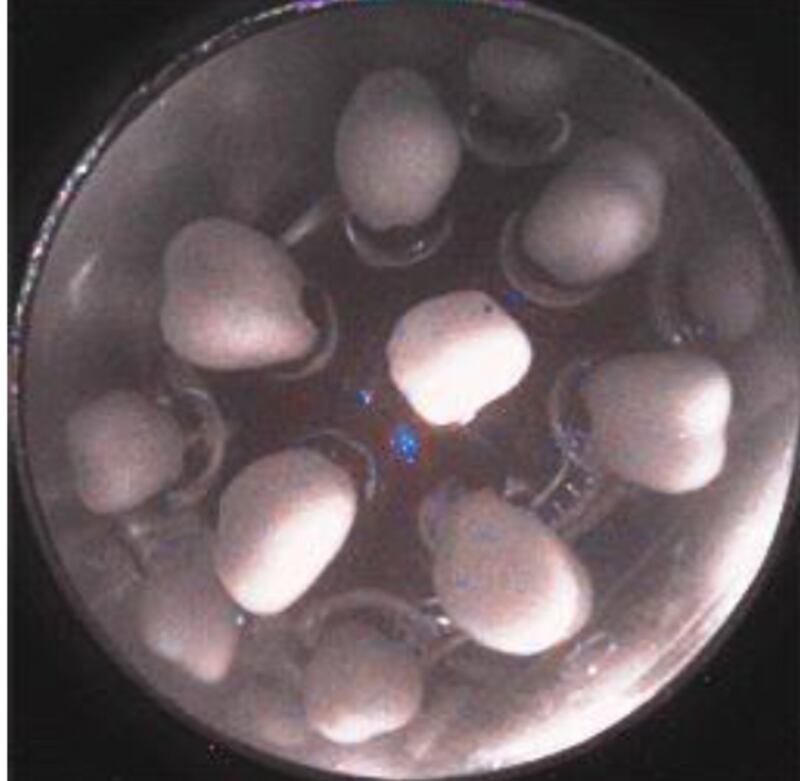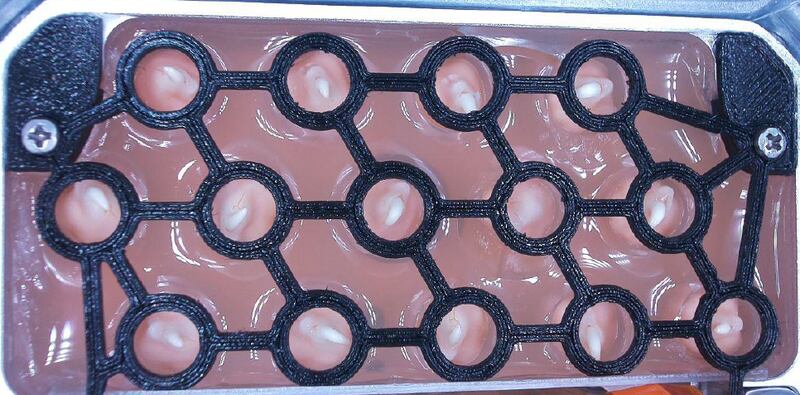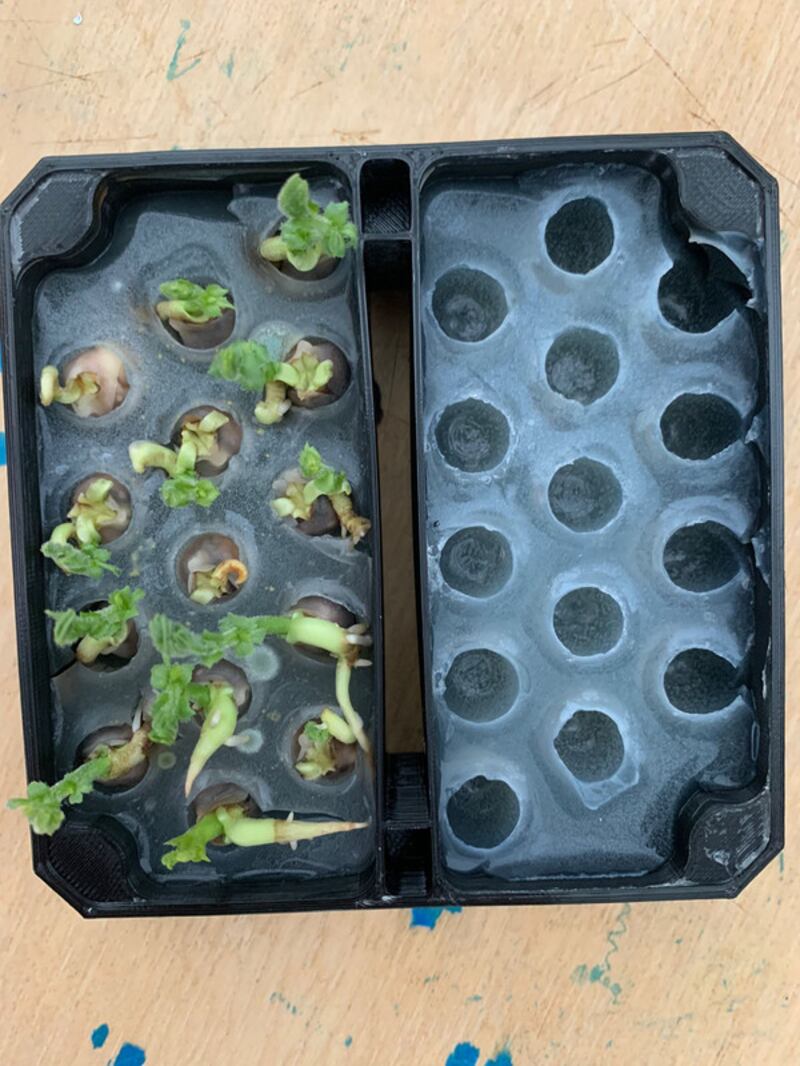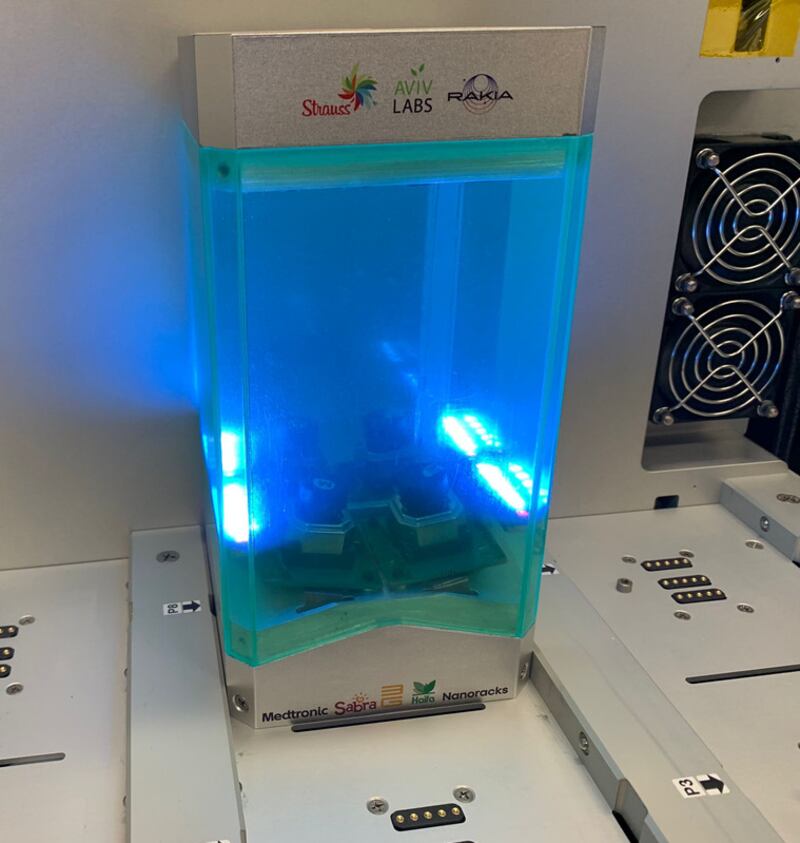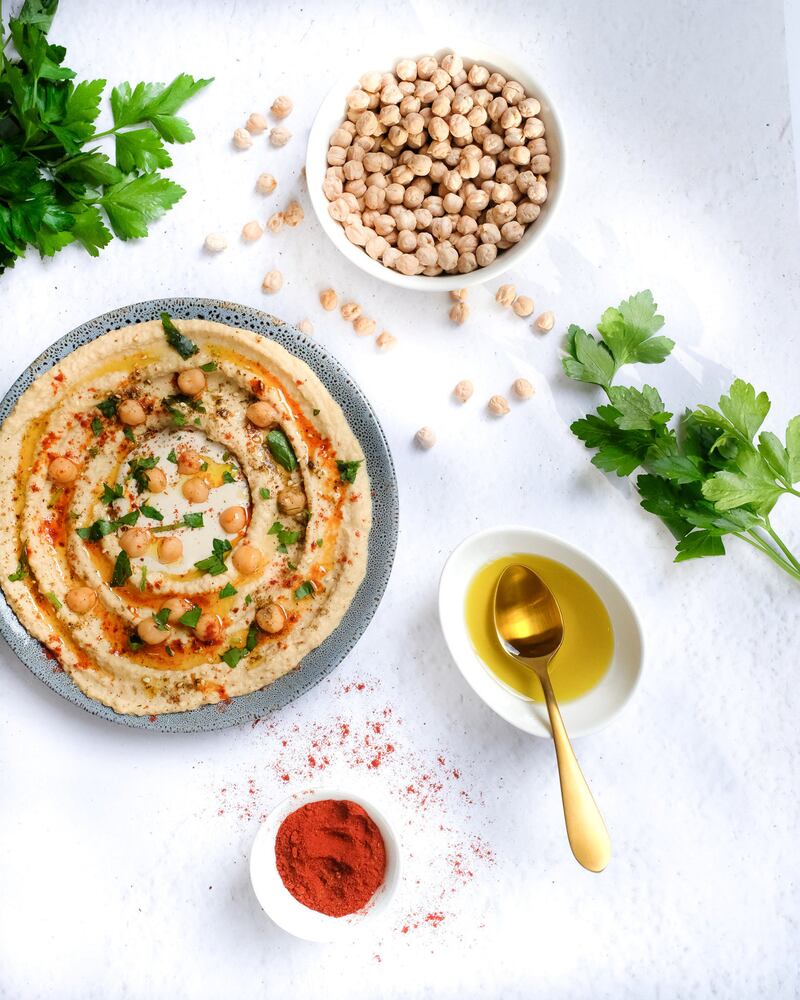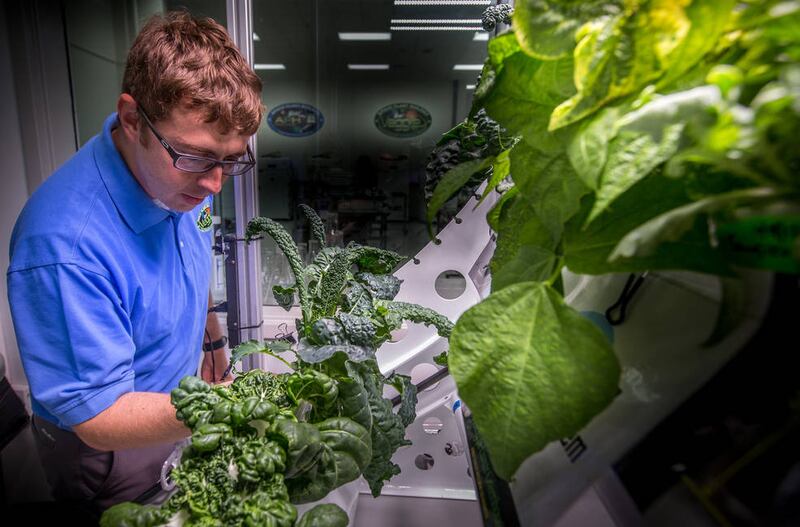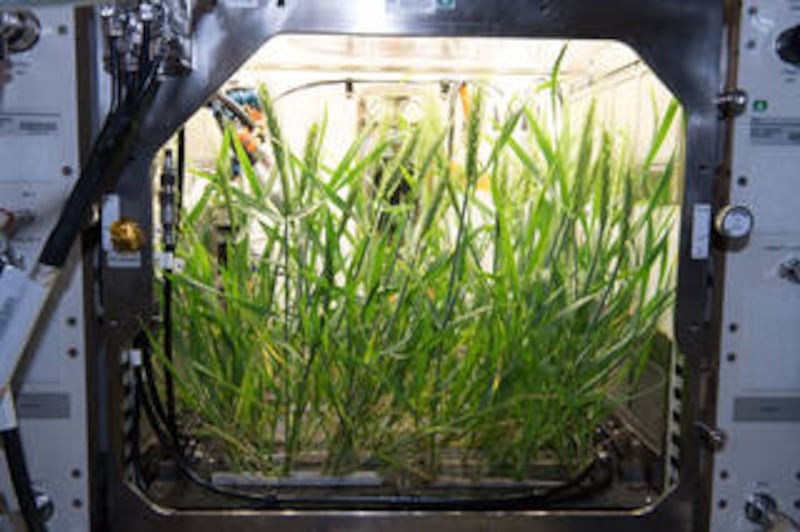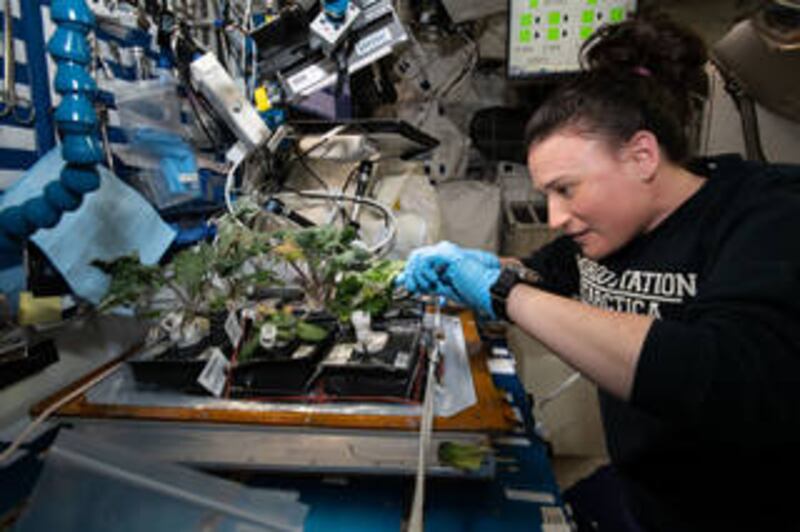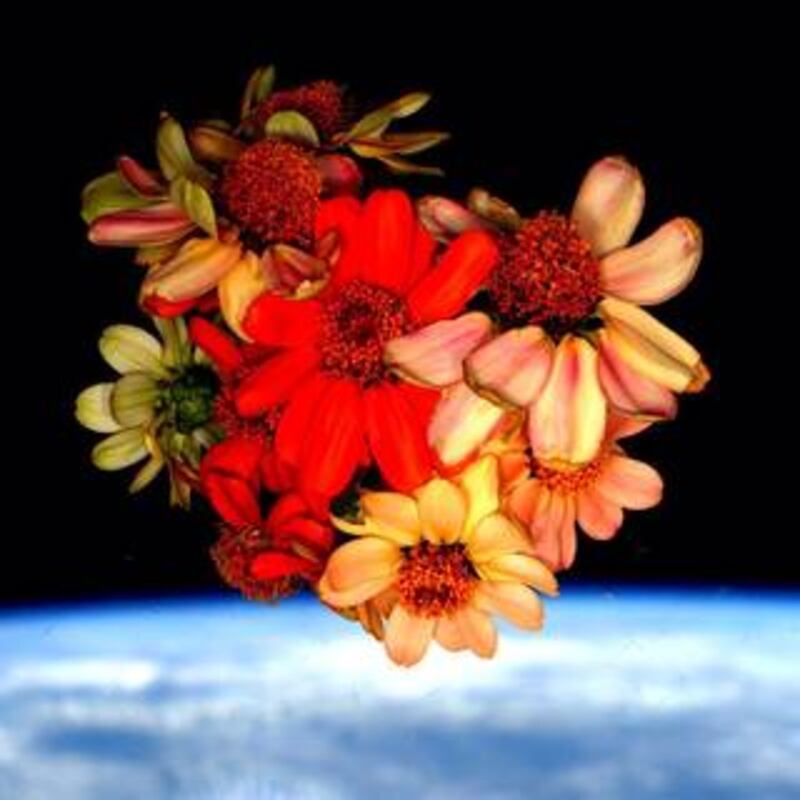Hummus may be on the menu for future Moon and Mars colonists, with researchers trying to grow chickpeas on the space station to test whether it is an easy crop to produce in micro-gravity.
Israeli researchers are leading the Space Hummus experiment, in which 28 chickpea seeds will be sent to the International Space Station aboard a Nasa cargo mission on February 19.
The legume crop will grow inside a miniature greenhouse, planted in a special nutrition-filled gel instead of soil.
“We have private individuals that would like to land on the Moon and the obvious question is what are these astronauts going to eat?” Yonatan Winetraub, co-founder of SpaceIL, the organisation behind Israel’s mission to the Moon, told The National.
“I think this is where the combination of faith engineering and biophysics can really propel us forward.
“The purpose of this particular experiment is a trial run of this greenhouse technology. What we want to do is grow those chickpeas in zero gravity in preparation of growing them on the Moon in a couple of years."

Mr Weintraub is leading the experiment, along with scientists and engineers from Israel and Stanford University.
Eytan Stibbe, an Israeli businessman who is flying to the space station as a private tourist in March, will be assisting with the experiment.
Hummus is a staple food in the Middle East and is a protein-packed meal that uses very few ingredients.
For now, astronauts eat dehydrated food that is stored in packets, but growing their own crops could add more nutrition to their diet if they go on long-duration missions to the Moon, and is more sustainable.
“Hummus is a great food with a highly efficient value. It’s a good candidate for this experiment, but I also think that it combines cultures,” Mr Winetraub said.
“It’s a type of food that is really common in the Middle East and throughout the world. I think it also has a really cool culture around it.”
The space station already has a “garden”, called Veggie, that researchers have been using for years to grow different kinds of plants.
So far, the special chamber has successfully grown three types of lettuce, Chinese cabbage, mizuna mustard, red Russian kale and zinnia flowers.
Agriculture on Earth is extremely vulnerable to climate change, leading scientists to explore alternative ways of growing plants.
And as space agencies work towards sending astronauts to the Moon and Mars for long-duration missions, these space farming methods could also be a solution for them.
How to make hummus
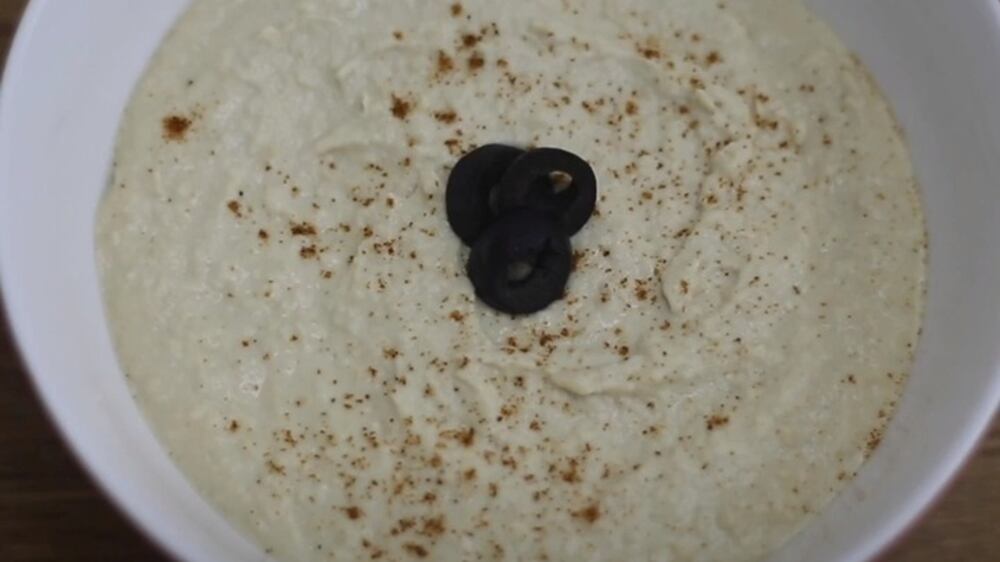
The Space Hummus experiment will test whether the rate at which the chickpea crops are grown can be controlled, which would help save resources on future colonies.
“They can’t grow too quickly or slowly, because either way, you’re going to run out of resources or the astronauts won’t have enough to eat,” Mr Winetraub said.
Special LEDs will to help measure the growth of the plants. A tiny camera inside the gel will monitor the roots of the seeds to identify in what direction they grow.
The crops will be sent back to Earth in June, so Mr Winetraub and his team can measure the results.
